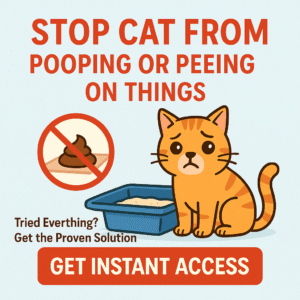Obesity is one of the most common health problems in domestic cats today. It’s not just about looks—overweight cats are at much higher risk for diabetes, arthritis, urinary tract disease, liver issues, and reduced lifespan. Fortunately, the right diet and feeding strategy can help your cat shed excess pounds safely and regain energy, mobility, and overall well-being. Here’s how to feed your overweight cat for lasting, healthy weight loss.
Why Do Cats Become Obese?
The main causes of feline obesity include:
- Free-feeding (leaving food out all day)
- Too many treats or table scraps
- Inactivity (indoor cats, aging, boredom)
- High-calorie dry food or “all-life-stage” diets
- Neutering/spaying (which lowers metabolism slightly)
- Underlying health problems (such as hypothyroidism or joint pain)
Most cats gain weight slowly, so it’s important to check your cat’s body condition regularly. If you can’t feel the ribs easily or see a waistline from above, your cat may be overweight.
How Diet Helps with Feline Weight Loss
- Controls calories: The key to weight loss is feeding fewer calories than your cat burns—but without causing hunger, stress, or loss of muscle.
- Prioritizes protein: High-protein, low-carbohydrate diets help maintain muscle while burning fat, and help cats feel full longer.
- Increases moisture: Wet (canned) foods have fewer calories per bite, are more filling, and support hydration.
- Limits fat and carbs: Many commercial cat foods are high in both, which promotes fat storage.
- Encourages portion control: Meals (not free feeding) help regulate appetite and metabolism.
What to Look for in Cat Food for Obese Cats
- High protein, moderate fat, low carbohydrates: Aim for at least 40% protein and less than 10% carbs on a dry matter basis, when possible.
- Calorie density clearly labeled: Choose foods that list calories per can or cup so you can portion meals precisely.
- Wet/canned foods: Offer better satiety and hydration with fewer calories per serving.
- Added L-carnitine: This amino acid helps burn fat and preserve lean muscle.
- No fillers or artificial additives: Skip foods with corn, soy, or sugary additives that contribute empty calories.
- Veterinary weight loss formulas: For severely overweight cats, prescription diets are safest and most effective.
Top Cat Food Choices for Obese Cats
1. Hill’s Prescription Diet Metabolic Weight Management (Wet & Dry, Veterinary Only)
- Clinically proven to support safe, steady weight loss and maintenance.
- High in protein and fiber, with low calories per serving.
- Requires a prescription—best for cats with significant obesity or failed past diets.
2. Royal Canin Satiety Support Weight Management (Wet & Dry, Veterinary Only)
- Formulated for satiety and safe fat loss—high protein, extra fiber, and controlled calories.
- Available by prescription, in both wet and dry for flexibility.
3. Purina Pro Plan Veterinary Diets OM Overweight Management (Wet & Dry, Veterinary Only)
- High protein, moderate fiber, low calorie—proven in clinical studies to help cats lose weight while maintaining muscle.
- Palatable for picky eaters who may resist diet food.
4. Weruva Cats in the Kitchen (Wet)
- Grain-free, high moisture, moderate calorie content for portioned feeding.
- Quality animal protein, low fat, and no fillers—easy to portion and appealing for cats new to weight loss food.
5. Tiki Cat After Dark (Wet)
- Very high in protein, moisture, and real animal ingredients with low carbohydrates.
- Not a prescription diet, but suitable for overweight cats needing strict portion control.
Practical Feeding Tips for Obese Cats
- Measure all food portions: Use a kitchen scale or measuring cup—never guess amounts.
- Feed multiple small meals: 2–4 small meals per day curb hunger and boost metabolism.
- Switch to wet food if possible: Wet food helps your cat feel full on fewer calories.
- Eliminate free feeding: Put away all food between meals to prevent mindless snacking.
- Cut treats drastically: Treats should make up less than 10% of daily calories—better yet, use a few kibbles of the regular diet as a treat.
- Weigh your cat weekly: Track weight loss progress—aim for 0.5–2% weight loss per week (too rapid loss is dangerous for cats).
- Increase activity: Use puzzle feeders, toys, or laser pointers to encourage more movement.
When to See the Vet
- Before starting any weight loss plan—rule out medical causes of obesity
- If your cat refuses food, vomits, or becomes lethargic during a diet
- If weight loss exceeds 2% of body weight per week (risk of hepatic lipidosis/fatty liver)
- To discuss prescription diets or other weight management strategies
Veterinary support is essential for obese cats, especially those with underlying conditions or history of yo-yo dieting.
The Bottom Line
The best cat food for obese cats is high in protein, low in carbs, moisture-rich, and portion-controlled for slow, steady weight loss. Wet foods and veterinary diets offer the best results, but consistent portioning, more play, and regular check-ins with your vet make the real difference. With patience and the right plan, your cat can lose weight, gain energy, and enjoy a longer, healthier life.
This article is for informational purposes only. Always consult your veterinarian before making major dietary changes or starting a weight loss plan for your cat.
